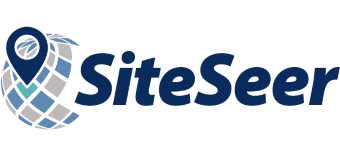 We’ve written before about data on this blog, and if you’re a regular reader, you’ve gotten the message. Data is the vital input that our site selection software, SiteSeer Pro, needs to help you gain insights and answers about markets and locations. But it’s essential that you keep several things in mind about data:
We’ve written before about data on this blog, and if you’re a regular reader, you’ve gotten the message. Data is the vital input that our site selection software, SiteSeer Pro, needs to help you gain insights and answers about markets and locations. But it’s essential that you keep several things in mind about data:
- It’s never a great idea to rely on one data source for all the answers you require.
- Multiple data types will strengthen your decision making, and no, you do not need every type of data that is available to you.
- Data isn’t as useful if it is outdated, no longer accurate, or irrelevant to your business and what you’re trying to analyze or solve.
- Every data type has limitations and challenges—and that doesn’t mean it is bad data!
It’s easy to get overwhelmed by the data deluge
We are operating in such a data-driven world today that it can be daunting. There’s always a “hot” new data type and it’s very easy to feel like you’re behind if you don’t rush out to get it. And then there’s the question of quantity vs. quality. Many businesses we talk to assume that more data is better—yet, they grapple with the issue of knowing what to do once they collect or acquire such data. While more data is usually better than less data, it’s best to have actionable data—or data that can be put to use to solve the business questions that you have
In our world, there’s no question that data-driven site selection is superior to the old “gut feel” approach (i.e., choosing a location based on a feeling or some anecdotal knowledge about a market). There are many types of data, but to simplify, when we refer to data for making site selection decisions, we are referring to two broad categories: your internal data and third-party data.
- Your "company" data is the data you collect about your customers as well as store data: store locations, attributes, site characteristics, financials, etc. Customer loyalty programs are one way to do that, and can tell you everything from what your customers are buying and when to marketing campaigns that seem to be effective.
- Third-party data is the data you buy or subscribe to, and there are all kinds: demographics, traffic counts, business locations, and foot traffic (mobile location) data, to name a few. Check out SiteSeer's data partners.
Different types of data are great for understanding different things. Mobile location data, for example, is good for seeing shoppers’ travel patterns and behaviors, but it provides limited information about why customers are making the choices they are.
It’s also worth noting, which we’ve done many times on this blog, that third-party data is useful if it is “clean” and accurate, but for data to be useful for analysis and modeling, data analysts often perform data "munging" and data "engineering" to transform the data into a format more useful for analysis or modeling. For example, marketing spend by market might not be as useful to a company as marketing spend per household.
But back to our point. Data can definitely help a business make smarter decisions, but not by itself. What if you don’t have a great way to aggregate and analyze that data? Do you have the bandwidth on your team to do that?
With the right tool, you can answer many questions
Retailers and other chain businesses of all sizes rely on SiteSeer to evaluate sites, understand their customers, and grow smarter. So, you’ll be able to actually understand and analyze the data you have and the third-party data you choose to acquire. That makes it actionable and much more helpful!
In SiteSeer, you’ll be able to run maps and reports that dig into demographics, lifestyle segmentation, traffic counts, shopping center information and competitors. You can run sales forecasts on prospective locations and site scorecards when narrowing down potential locations. Hot spot analyses will help you decide where your concept will succeed.
For retail chains, restaurant chains, and other service businesses, SiteSeer can help you answer questions like:
- Where are my customers shopping?
- Why does location A perform better than location B in my store portfolio?
- If I open a store in this location, will it cannibalize stores in my next closest location?
- Who are my best customers and what are their behaviors and travel patterns?
- Where can I find more locations like my best-performing store?
- What are the best types of shopping centers for my business?
- Will my concept succeed in this particular new market?
For real estate developers and brokers, SiteSeer can help you answer questions like:
- How can I find hot spots in a market where a specific chain store should have a presence (based on their typical location profile)?
- Which shopping centers are appropriate for certain retailers?
- Where should you locate your development to entice certain tenants?
- What tenants are the best fit for my shopping center?
- How does my site compare to existing stores of a certain chain?
SiteSeer helps you understand complex data
Good retail research should rely upon your experience and the insights you can gain from quality data, but as you know, data alone isn’t helpful. You need the tools to understand that data and use it to make good decisions. And if you’re not an analyst, you need a tool that is easy to use, yet sophisticated enough to make sense of complex, raw data for greater market intelligence.
That’s what SiteSeer can do!
To learn more about how SiteSeer can help you achieve your market expansion and site selection goals, contact us for a demo. We’ll introduce you to the data partners we work with and make sure you get the right data sources to help you make decisions.


